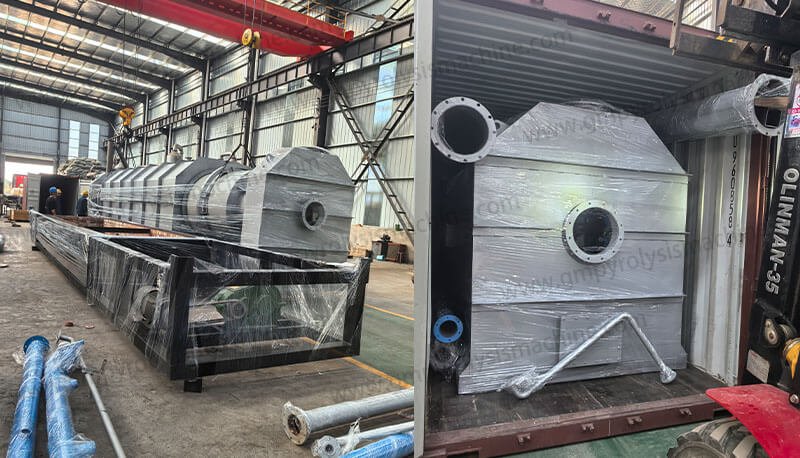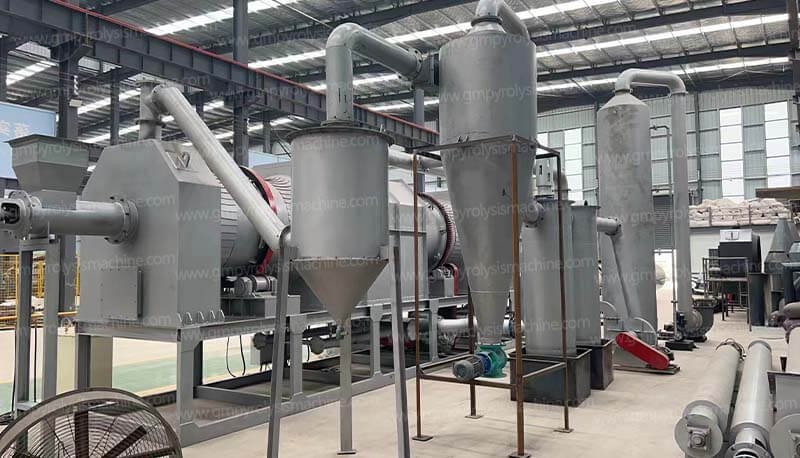To make charcoal, various types of machines are used depending on the production scale and technology. The process generally involves converting biomass materials (like wood, agricultural residues, or coconut shells) into charcoal through a process called pyrolysis (heating in the absence of oxygen).
1. Charcoal Making Machine (or Charcoal Briquette Machine):
Function: This is the primary machine used in modern charcoal production. It is responsible for turning raw biomass (like wood, coconut shells, or bamboo) into charcoal.
Process: The biomass is fed into a pyrolysis reactor or furnace where it is heated at high temperatures (usually 400–700°C) in the absence of oxygen, turning it into charcoal.
Types:
Continuous Charcoal Making Machine: This machine allows continuous feeding of raw materials and removal of finished charcoal, ensuring uninterrupted production.
Batch Charcoal Making Machine: This machine works in batches, where raw materials are added, and the charcoal is removed after each cycle.
2. Carbonization Furnace:
Function: A furnace or kiln used for carbonizing (heating) the raw biomass to produce charcoal. The furnace ensures that the process is conducted in an oxygen-deprived environment to prevent combustion.
Types:
Traditional Kilns: Used for small-scale production, these can be simple brick or metal kilns.
Continuous Carbonization Furnaces: Used in larger-scale operations for more controlled heating and better efficiency.
3. Briquette Machine (for Charcoal Briquettes):
Function: This machine is used if the goal is to produce charcoal briquettes rather than loose charcoal. It compresses the charcoal powder into solid briquettes of various shapes and sizes.
Types:
Manual Charcoal Briquette Machine: Suitable for small-scale production.
Automatic Charcoal Briquette Machine: Used for large-scale production, with automatic feeding, pressing, and shaping.
4. Drying Machine:
Function: Before the biomass can be carbonized, it usually needs to be dried to reduce moisture content (typically to around 10-15%). The drying machine ensures that the material is dry enough for efficient carbonization.
Types:
Rotary Drum Dryer: Uses hot air to remove moisture from the biomass.
Mesh Belt Dryer: A continuous drying system suitable for large-scale operations.
5. Crusher/Shredder:
Function: This machine is used to break down larger pieces of biomass (like branches, logs, or leaves) into smaller, uniform sizes, making them easier to feed into the carbonization furnace or briquette machine.
Types:
Wood Crusher: Specifically designed to process wood into smaller chips.
Hammer Mill: Can crush a variety of materials, including wood and agricultural waste.
6. Screening and Grading Machine:
Function: After the carbonization process, charcoal often needs to be screened or sorted based on size to ensure uniformity in the final product.
Types:
Vibrating Screen: Separates fine charcoal powder from larger pieces.
Grading Machine: Sorts charcoal based on size to meet market requirements.
7. Charcoal Briquette Dryer:
Function: If charcoal briquettes are produced, they may need to be dried after they are shaped to reduce moisture content before packaging or storage.
Types:
Rotary Drum Dryer: A common option for drying briquettes.
Airflow Dryer: Uses hot air to dry charcoal briquettes quickly.
8. Carbonizing Kiln (for Small Scale):
Function: A simpler, often smaller unit used in artisanal or small-scale charcoal production. These kilns are used for manual carbonization processes, typically at lower volumes.
Types:
Earth Kiln: A traditional method where biomass is burned in a pit.
Metal Kiln: A more durable and efficient option than earth kilns, often used for small to medium-scale operations.
9. Dust Removal System:
Function: During the pyrolysis process, fine dust and gases are produced, which need to be filtered out to prevent air pollution and ensure safe working conditions.
Types:
Cyclone Dust Collector: Removes large particles of dust from exhaust gases.
Bag Filter: Captures fine dust particles before releasing gases into the atmosphere.
10. Cooling System:
Function: After the charcoal is produced, it needs to be cooled before it can be packaged or stored. A cooling system ensures that the charcoal cools down safely and is not exposed to the risk of combustion.
Types:
Cooling Tower: A basic cooling unit that allows the hot charcoal to cool down.
Cooling Belt Conveyor: A conveyor system that cools down charcoal over time, often used in large-scale plants.
The combination of these machines depends on the scale and the specific needs of the charcoal production process. Large-scale plants tend to use more automated and efficient systems (continuous charcoal making machines, drying, briquetting, and carbonization units), while smaller operations may use simpler, manual processes (traditional kilns and manual briquette presses).







